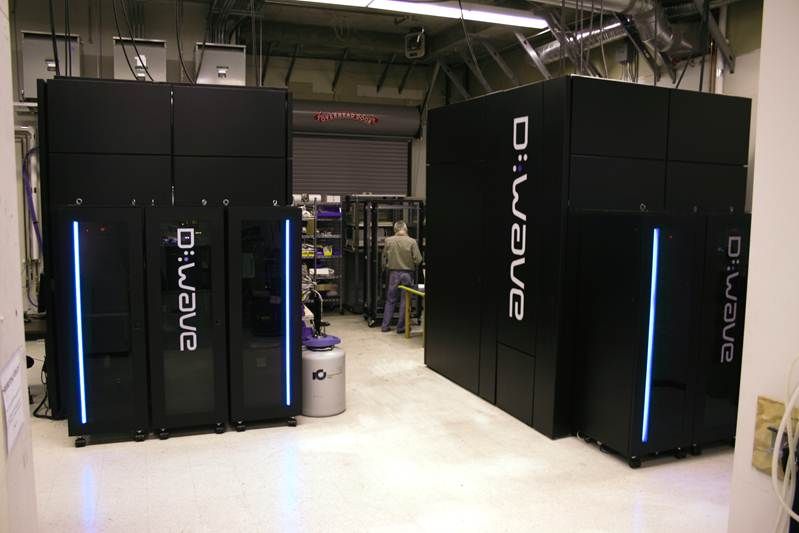As many people are
beginning to realize, the future of computing lies in the utilization of
quantum properties.
Traditional computers
like macs and PCs run using bits, which can either be a 1 or a 0, to store or
process information. In the past we have increased the speed of our computers
by creating hardware that can move and decode these strings of bits faster than
before.
However, computers that
run in this fashion are beginning to reach a limitation in crunching numbers and
finding the best solution to a problem because of one factor; the computer
needs to run every single possible outcome, one after
another, and then compare to see which was the best solution. Quantum computing
solves this problem because an electron, and every other subatomic particle,
has the property of being in two places at once when not being directly
observed. This is proven by the double slit experiment (read more on this).
Due to the fact that a
subatomic particle can be in two places at once, there is now a gray area for
the quantum computing world. With this gray area, quantum computers reject the
traditional, on/off, yes/no, up/down approach, and embrace the ability to be
both up and down, both 1 and 0. Thus, in principle, a quantum computer is able
to run many of the possibilities at the same time, instead of one
by one.
Whereas
traditional computers use bits to store pieces of information, quantum
computers use a qubit. Originally, developers aimed for quantum computers to
work in the same style as traditional computers, with the sole difference being
the possibility of checking multiple solutions at once. However, this early
idea failed to be conceived with accuracy because the qubits were so sensitive
to changes in the world around it (such as movement and temperature changes).
This was cleverly solved
through the creation of "adiabatic quantum computing", which, instead
of solving for a solution, solves for the best answer to a problem with certain
criteria. For example, it would find the most energetically efficient way to
fold a protein where (criteria) various amino acids attract or
repel each other.
In 2007, a company
called D-wave launched the first quantum computer ever that used this
technique. This prototype used only 16 qubits, but was still powerful enough to
search a database of molecules to find a molecule similar to a given drug.
Today, D-wave has not doubled or tripled the computer's processing power, but
made it 32 times faster. It now uses 512 qubits. This quantum computer, called
the D-wave two, is now on the market and commercial. A model has already been
bought by Google.
The company hopes to double its computers' processing power every year. Everybody is hopeful that these quantum computers will take over our classical computers in the very near future.
(source: Nature, June 20 edition, pages 286-288)
Like many others I believe that this is a huge step to the near future of powerful computers. There is much work to be done, though, before the average american can have a quantum computer. This is especially true for the cooling industries, as that is what is taking up all the space in the machines. if it is not possible to shrink the cooling systems, it is obvious that we should find a way to utilize the quantum chips at room temperature. Despite these obstacles, I am confident that we will overcome these challenges with time, and I hope that there will soon be a day where we can have quantum chips in our cell phones; or even embedded in our brains (to either have a super mobile device or to elevate our brain capacity.









